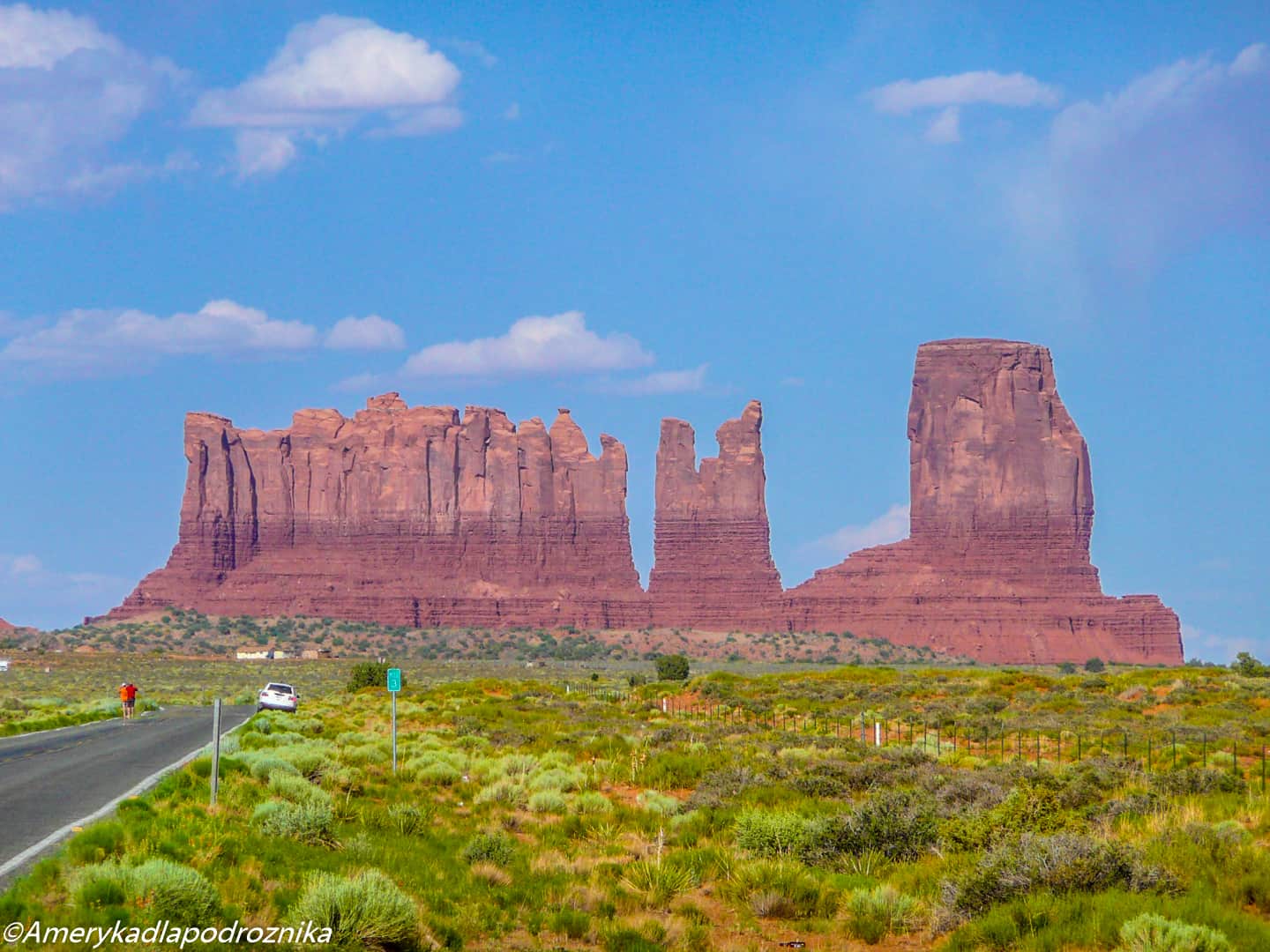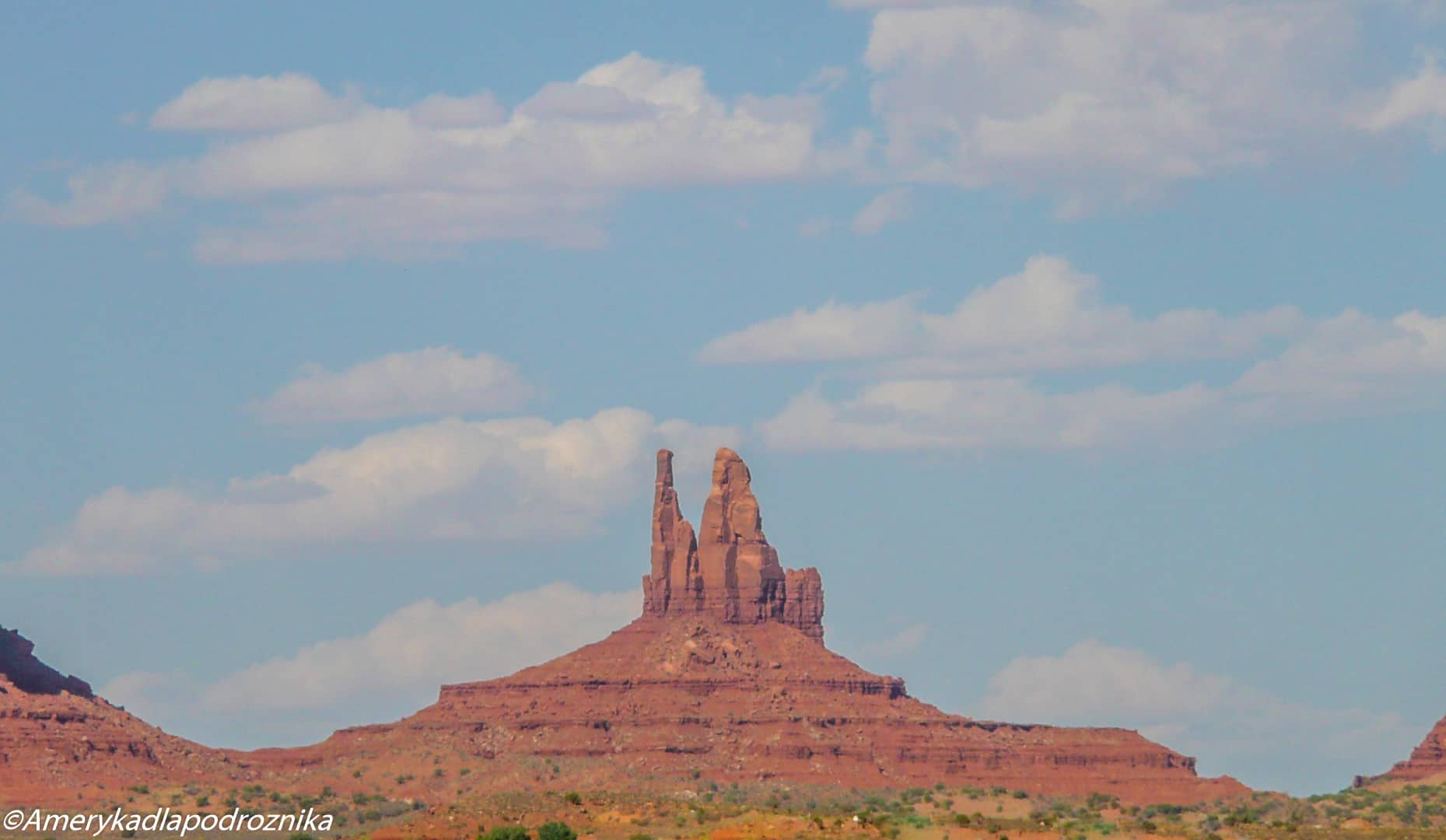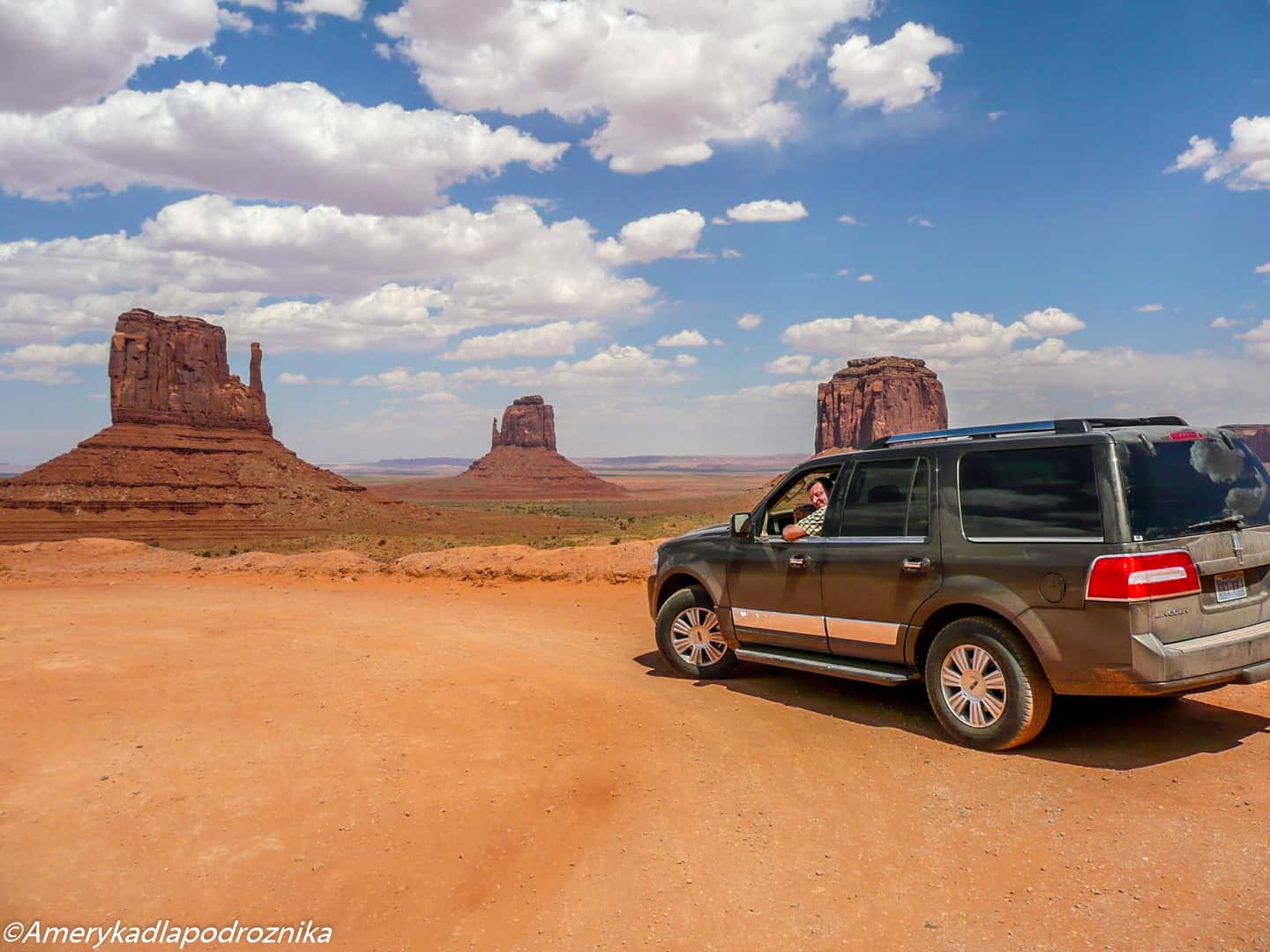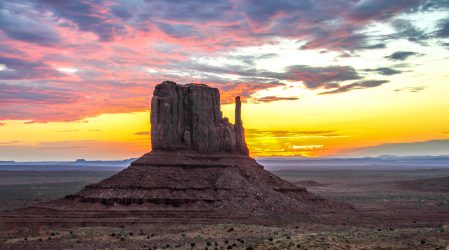„So, this where God put the West” – said John Wayne, when saw Monument Valley, and it is hard not to agree. I myself saw Monument Valley for the first time in a movie. It was a picture by Sergio Leone “Once Upon a Time in the West”, with incredible soundtrack by Ennio Morricone. I fell in love with Monument Valley instantly. Of course, I didn’t know what this place was called back then, but I already knew that it’s on my bucket list. I still think that it is easier to go into outer space as a passenger in a Tesla toady, than it was to travel from Poland to the US back then, because of a communist regime in my country.
Fortunately the political circumstances changed, allowing me to visit Monument Valley a number of times. Every visit there was moving, but not as much as the first time, when we stood on the red sands of Tsé Bii’ Ndzisgaii, as the Navajo call this place.
A few words about Monument Valley’s history
There is no information about Spanish explorers between the XVIIth and the XVIIIth century arriving here, but there is evidence that they did indeed venture into the surrounding lands and that they clashed several times with the Navajo residing in the Four Corners area. The Mexican soldiers that entered the Valley in 1822 were probably the first non-Indians to come here. Later the US Army arrived together with the first settlers. During this time there was a series of skirmishes between the Navajo and the army. The Navajo would steal the soldiers’ horses, and the army would burn Indian settlements and destroy their crops in return. The Ute tribe, who knew the terrain and the locations of Navajo fortifications, often supported the US army in such raids.
Finally in January of 1863 the US government made the decision to resettle the Navajo from their lands. The Navajo People were hunted and captured, again with the help of the Ute, their villages were burnt and livestock killed. Navajo were supposed to move to a reservation in New Mexico. Those land were called Bosque Redondo.
In spring of 1864 the so called Long Walk – a march to a reservation 300 miles (480 km) away, begun. The Navajo were rushed like cattle, with no one from the army really caring about their fate. The elderly and the weak would die on the way, women in advanced stages of pregnancy or those who started giving birth were killed by the soldiers. During the 18 day long march 200 out of 8 thousand people died.
Bosque Redondo proved to be a very inhospitable land, with not enough water and firewood and with frequent diseases destroying the crops. What is more, the Navajo were forced to live in the place, where a group of the Apache, longtime enemies of Navajo, were also relocated. This resulted in constant clashes and conflicts inside the reservation, what also affected the white settlers living nearby. 1.5 million dollars had to be spent every year in order to feed the starving Native Americans. Finally the US government realized that the placement of a reservation here made no sense, so a treaty from June of 1868 allowed the Navajo to return. The traumatic experiences of The Long Walk became a binder for the Navajo Nation.
The treaty granted the Navajo People 14 000 km2 of land in the Four Corners area. But this was still not the Monument Valley, which remained a public land, inhabited except for the Navajo also by the Ute and the Paiute tribes and white settlers. When the Americans realized that these land were of no use to them, as no gold or oil had been found here, they were handed over to the Navajo under the treaty of 1933. Monument Valley finally returned to the tribe.
Monument Valley made a successful career in the movie industry in the 40s, which kept bringing more and more visitors. In 1958 the Tribe Council decided to create the first-ever tribal park in history in Monument Valley. It was supposed to be administered by the Navajo using a national park model. The roads were upgraded and a visitor center was built.
Monument Valley becomes famous
In 1925, when these reservation lands were still public, a man named Harry Goulding moved here. He established a small trading outpost near the north-west border of the Monument Valley. He had good relations with the Navajo, he gave them loans and was always eager to help. The Navajo liked and trusted him.
When his business run into financial troubles, he started looking for some other income sources. He overheard on the radio, that Hollywood is looking for a filming location for a western movie. He quickly packed photos of Monument Valley into his suitcase and travelled to the United Artists studio. The year was 1938. When Harry arrived, nobody wanted to even speak with him. Finally when he threatened that he would occupy the office, a manager came to kick him out. But when he saw the photographs of Monument Valley, he instantly handed Goulding a check worth $5000 and ordered him to mount a crew of Navajo , who were to play the roles of the Apache.
This is how director John Ford arrived to the valley, and the movie “Stagecoach”, with John Wayne playing the main role, made Monument Valley famous worldwide. The movie had won two Oscars, and the western received a promotion from B category cinema, to the rank of a distinguished work. John Ford made additional 6 movies in the valley, giving the tribe and the local entrepreneurs a huge financial boost. Henry Goulding himself was able to add a large motel and a restaurant to his trading outpost.
How should one behave in the Navajo reservation?
The Navajo are sincere, but not to outgoing people and they tend to be a bit withdrawn in contact with strangers. They are rather an opposite of the open and straightforward Americans. You should not pat their shoulders when greeting, and you should not be surprised when they avoid eye contact. This is by no means a way of expressing disrespect, this is just their way of being.
During a ride through Monument Valley you won’t come across a lot of folklore to photograph, but in case you do want to take a picture of someone, you should always ask for permission and give them a tip afterwards. If you want to photograph a beautifully dressed Native American woman selling jewelry, it is best to simply buy something from her. Their products are incredibly pretty, and when brought back home they can make a lot of sensation because of their originality. You can photograph without asking for permission only during public events.
It would generally be nice, if instead of buying a made in China Los Angeles magnet, you bought your family souvenirs here. You will bring original presents and support those hard working and economic people. Comparing to other reservations, the Navajo reservation is simply blooming, and the last 20 years had been a time of an incredible civilization jump. The Navajo develop residential estates and schools and they care about their cultural legacy.
If you are lucky enough to attend an Indian ceremony, please remember that it is a religious event. Do not talk, do not stare into your phone and generally act as if you were at a mass in a church. Indian ceremonies are usually dances, but under no circumstances may you clap at the end or give any applause. You can behave freely only during official festivals.
You should not touch any clothes or jewelry worn by the Native Americans. It is sometimes normal for us to grab something and say “oh my, what a beautiful necklace you are wearing”, but for the Navajo it can be disrespectful. Some of their jewelry pieces are sacred, and touching them by strangers is considered profanation.
The Navajo do not have a chief, but a president, elected every four years, so keep that in mind and do not mention anything about their chief, as it will make you look ignorant, and the Native Americans may think, that you consider them savages.
There is a strict prohibition within the reservation borders. It is illegal to bring and consume any alcohol. This ban is strictly enforced. One of my friends left empty beer bottles in a trash bin in his hotel room, and after the check out check out, an additional $200 had been collected from his credit card, as a penalty for alcohol consumption. So please, be an abstinent during your visit.
Every Native American tribe is different, the things that you learned in one reservation, can totally not work in another one. Just as Poles hate being mistaken for Russians, or Turks mistaken for Arabs, one Native American nation does not like to be mistaken for a different Native American nation.
No Navajo will call themselves “Navajo”, they instead use “Diné”, which basically means “people”, or how we may prefer “we, the people”.
Please keep in mind that not all Native Americans know English. Some people, especially the elderly, do not use it at all. The usage of their mother tongue is very popular, and they often use it among themselves.
It would be nice of you to get to know some words in the Navajo language, which is called Diné bizaad. It is worth to know the word “thank you” – “Ahéhee”, pronounced as “aheehee”. “Yá’át’ééh”, pronounced „ya a te”, with an accent on the „te” means “hello” For special tasks you can use the phrase “I love you” – “Ayóó Ánííníshní” [ayo aninishni]. I personally like the word “Adą́ą́dą́ą́’”, which means „yesterday”, but I never had a chance to use it. 😊

Where to spend the night?
Staying inside the reservation would probably be the best. Unfortunately the prices here are extremely high and you have to keep that in mind when planning your trip. A night spent here will allow you to witness an amazing sunset, and an even more spectacular sunrise.
The View is the only hotel in the park. The hotel building is well integrated into the red rocks of Monument Valley. Every room has a balcony overlooking The Mittens – the most epic buttes in the valley. The hotel has a good standard, every room has a bathroom, a fridge and a microwave, but it is the view that you are paying for here. The hotel has a nice restaurant serving breakfast, lunch and dinner. You can sit here with a view of the Monument Valley.

The hotel also has luxurious cabins in addition to standard rooms. They are equipped similarly to hotel rooms, but with additional small bedrooms for children, equipped with bunk beds. Some cabins have a living room with an unfolding sofa, on which you can sleep. Every cabin has a terrace with a view of the Monument Valley. The cabins are located on a cliff and stand in two rows. It is worth to book the first row, as the view is best from here.
You can book a room or a cabin here:
http://monumentvalleyview.com/reservations/
The View compground also offers campsites and RV spots with amazing view of the valley. There are bathrooms and showers there.
Here you can book a campground:
http://monumentvalleyview.com/campground/
The View is incredibly popular, and the cheapest rooms sell out quickly, so you should book them in advance. The cabins and campsites are a bit easier to book, but you should not postpone the booking for the last minute.
A nice but also not cheap option is the Monument Valley Tipi Village. It is a fairly secluded place, located among Native Americans households, away from the touristy turmoil and only 4 miles from the park entrance. Here you can spend a night in a tipi, hogan, or your own tent on the campground. You will also have a view of the Monument Valley from here.
The hogan offered for rent is equipped incredibly well and is very neatly arranged. Here you will find two beds with beddings, a wood stove, tables, chairs, a sofa, a fridge and a microwave. All of that decorated with handmade carpets.
In every one of the five offered tipis you will find tourist beds with beddings, chairs, picnic tables and a lamp giving the tipi some light. Every tipi has a shed with a table, grill, electrical outlet and running water.
Every of the three campsites has such a shed assigned to it as well.
The guests can also enjoy new toilets and showers, as well as shared fridge and microwave. What is more, there is even WiFi here.
You can also request a breakfast.
You can book a spot in the Monument Valley Tipi Village here:
http://www.monumentvalley-tipivillage.com/lodging-rates/
Monument Valley Tipi Village has a very good standard compared to other accommodation options offered for example by Airbnb. Some hogans that I checked out looked like basements after looter raid, with a hole in the ground serving as a toilet. So look into the offers carefully, as the Hogan standards vary and it is good to be aware what you are booking, so that you are not disappointed.
Please remember that Native Americans will be your hosts here, and they will not effusively greet you or ask about your family three generations back. People used to American hosts may find this disrespectful, but on the contrary, this is their way of showing respect.
The Goulding Lodge and Campground are also worth mentioning. This is a large compground built in the place of the historic Goulding’s Trading Post. This is a decent site with a shop and a restaurant. Here you can find rooms, small apartments with kitchens, cabins, RV spots and a campground. The guests can enjoy an indoor pool and even an airfield. There is also a museum documenting the live of people from this area.
As you can see this place is not too rural, but it is very close to Monument Valley and thus worth considering.
Here you can book a room:
Here you can book a cabin and a campground:
https://camp.gouldings.net/iqreservations/asp/CheckAvailability.asp
Entering Monument Valley
We reach Monument Valley via route 163. Approaching the park from the north you can stop at a couple amazing spots along the way.
The first one is the so called the Forrest Gump Point. Honestly I stopped there several times during my travels, but only recently I did realized that it had been given this name. This point is located next to the 13 mile pole, 7.9 miles away from the bridge over the San Juan River. There are pullouts to park on both sides of the road. From here you can enjoy an amazing panorama of the valley, with a view of the road leading to it. In this spot you are still quite a distance away from the valley, but do not give in to the temptation to drive closer to get better pictures. You won’t have a better view, here you will be on a hill and driving forward will mean losing the unique perspective.
The best time of the day to get pictures from the Forrest Gump Point is morning, preferably a dawn.
Why this spot earned this name? This is a place of the famous Forrest Gump movie scene, where Forrest Gump, who was on a nationwide run, came to a conclusion that he had run enough in his life and here he decided not to run anymore.

Driving further you will see the famous buttes and pinackles to your left: Brigham Tombe, The King on his Throne, Stagecoach, Bear and Rabbit and Castle Butte, Big Indian, sometimes called the Big Chief, and the Sentinel Mesa. From the road it is best to photograph them in the afternoon.


Now we turn left onto route 468, also called the Monument Valley Rd. and then we wait in a line to the entrance. The entrance fee is 10$ per person, kids under the age of 9 enter for free. There is a fee 20$ per one car, provided there are 4 people in the vehicle. Just a bit further you will see one of the most famous views on this planet.
Can I travel on Monument Valley’s roads with a sedan?
Generally speaking the answer is “yes”. But there are a few “buts”.
The road leading through Monument Valley is made of cured clay, which has a tendency of getting soggy. In winter the melting snow often damages the road. The cars struggling in the clay create deep grooves and holes that can fit half a car’s tire. In spring the road is usually leveled and repaired, but for some time it remains in perfect condition. Then in July the monsoon season begins, it sometimes rains in the afternoons and storms do happen. The road becomes damaged again and if it is not repaired it is in a terrible shape by the end of summer. But the chances of the road being in a good condition are quite high.
How to check the condition of the road? Very easily, just take a walk a couple dozen yards down the road and you will have a clear picture of what awaits you. The beginning is the worst part of the road, so if you think that you can beat it, you can be sure that the rest of the drive will not prove too difficult.
The road down to the valley is in a far better shape than the road back. If you do not want to struggle with the holes and groves, just drive on the left, no one will get angry at you, they will wait for you to pass, as they know that they themselves will have to go back up.
But what if you get stuck in a hole and can’t get out? Immediately someone will get out of their car to help you out. The traffic here is as intense as in downtown LA, so there definitely will be many hands to help.
Generally speaking it would be best to have a high clearance vehicle for this road. But before we came up with the idea of renting such cars, we managed to pass this road with a simple Pontiac sedan. The main principle: you should drive slowly while going both down- and uphill, you should keep your speed at around 10 mph. Later the road gets better and you can speed up.

CONTINUE READING:





